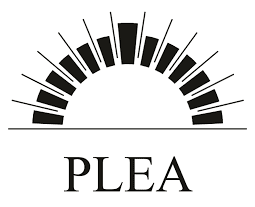We present here a theoretical study about the relationships between comfortable and pleasant ambiences. The notion of comfort is not sufficient for the study and design of ambience. Ambience is defined here as the way the environment affects a subject. Subjects are naturally affected by a global ambience. However, for the analysis, we distinguish between luminous, aesthetic, thermal, acoustic… ambience. Comfort definitions exclude the notion of tension and psycho-physiological disturbance on subjects, whatever its level may be. The question of pleasant ambience is naturally not fully answered. However, one way to define a pleasant ambience especially includes the notion of tension on subjects affected by an ambience. The case of the house on the cascade by F L Wright perfectly illustrates this point. This house is situated on a waterfall whose acoustic level is above all norms. Therefore this house is not comfortable. However, it is widely recognised and taught as a reference for its pleasant ambience, especially for the contribution of the acoustic ambience. In this case, the comfortable and pleasant sides of ambience are conflicting. As modern technologies are improving, artificial lighting and ventilation, for example, can lead to perfectly comfortable ambience. However, it is widely recognised that natural lighting and passive ventilation are more pleasant. We develop this discussion on the basis of the results of a study on qualifications of luminous ambience and on other theoretical and technical works. We believe that this investigation is nowadays important because the technological sides of ambience are improving : comfortable ambience may be designed, but are they pleasant ? We think that a very global view on ambience is now needed.
Comfortable and/or pleasant ambience : conflicting issues ?
This entry was posted in Conference Paper. Bookmark the permalink.

